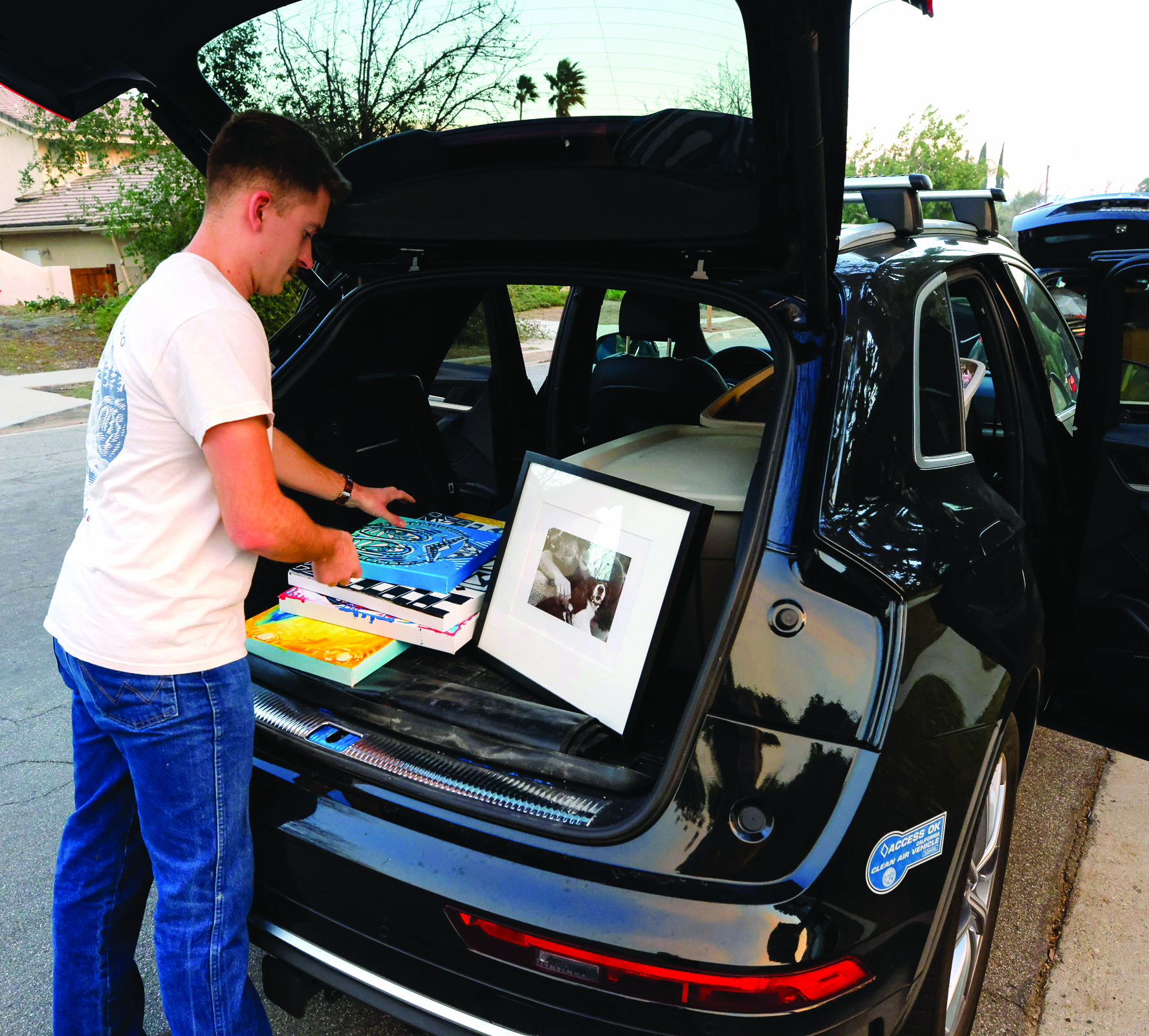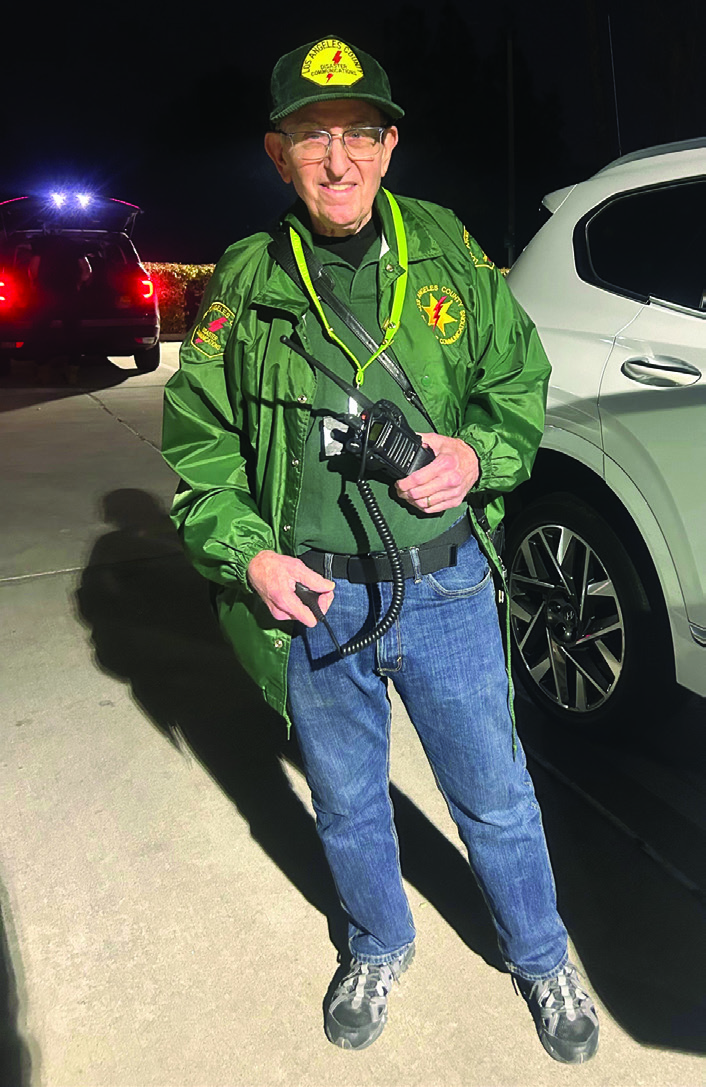

Seven days of historically destructive wildfires in Los Angeles County brought power outages, school closures and partial evacuation orders to the Conejo and Las Virgenes valleys, though the region’s worst fears were avoided when crews quickly halted the Kenneth fire as it threatened homes on Jan. 9.
That blaze broke out at around 2:30 p.m. in the West Hills area near the L.A.-Ventura county line, and burned southward through open space toward the 101 Freeway, sending a menacing plume of smoke over a Las Virgenes Road exit jammed with vehicles making an evacuation. Residents of Hidden Hills and Calabasas communities northof the freeway were ordered to leave, while Agoura Hills and Oak Park were placed under an evacuation warning.
For two days,residents had nervously monitored the progress of the Palisades fire to the south, as it ravaged the eastern end of Malibu after largely erasing the Westside L.A. neighborhood for which it was named.
Now, the exceptionally strong Santa Ana winds that made that fire so disastrous were pushing flames closer to home.
L.A. and Ventura County firefighters began containment efforts, using ground crews as well as air resources. Despite what a Cal Fire incident update described as “challenging terrain and persistent winds,” the Ventura County Fire Department said later in the evening that the fire’s forward progress had been stopped.
All evacuation orders and warnings were lifted.
The Kenneth fire burned 1,052 acres in both counties before Cal Fire announced on Jan. 12 that it had been fully contained. No structures were reported damaged or destroyed. But there was oneother notable impact: At around 4 p.m. on Thursday, an evacuation alert for the fire was erroneously sent to nearly 10 million residents across L.A. County, jolting a population already on edge. A correction went out around 20 minutes later.
In a statement, the county’s Emergency Operations Center said that it released “an accurate, correctly-targeted alert,” whichwas then mistakenly disseminated much too widely. Software vendor Genasys was said to be participating in the review of what it called a “serious breach of publictrust.” A second false alarm awoke sleeping residents at 4 a.m. Jan. 10.
All local emergency notifications were switched to the state CalOES alert system, pending resolution of the problem.
Topanga resident Nicole Dunn-Garay received the false alarm at the Woodland Hills hotel where she and her husband had fled to as the Palisades fire advanced.
“Even the hotel came on and said, ‘We’re prepared to evacuate,’” she said, before the warning was withdrawn. “At that point, your nerves are already like, ‘Oh, my god.’”
Evacuation matters
Dunn-Garay’s evacuation was complicated by another widespread issue: public safety power shutoffs. When electricity is cut due to fire weather, cellular service can vanish along with it, leaving people unable to receive alerts. That was the case for her.
“Oftentimes, the only way to find out is when the cops start coming up the road with the evacuation (order),” she said.
“That’s the only way we would know, because our power went out.”
Many people were caught unprepared, Dunn-Garay said, and left with just the clothes on their back.
Calabasas resident Norm Goodkin spent the day of the Kenneth fire transmitting updates via amateur radio as he tried to help those who had lost cellphone service. That evening, the 81-year-old Goodkin left his Greater Mulwood home—where his son, daughter-in-law and grandchildren were staying after they evacuated from Oak Park—and went to the Lost Hills Sheriff’s Station to pick up batteries for his radio. He began working as a volunteer at the station back in 1979.
Asked where he resides, Goodkin responded smartly: “Zone 414.” His neighborhood is in the area designated CAL-C414 on the map used by emergency services to plan evacuations. Goodkin took to heart an active 2023 campaign by local cities that urged residents to learn which evacuation zone they live in: “That’s very important, that people know their zone.” Residents can use the Genasys Protect platform to enter their address, find their zone, and get targeted updates.
In Oak Park, where the electricity went out the day before, the only illumination along Kanan Road was provided by the glowing signs for Vons and Ralphs grocery stores, both running on generator power. Employees remained working at the stores in spite of the evacuation warning.
“I feel good that we do have the ability to help people in need,” said 26-year-old Dylan Ludwig of Simi Valley, the closing supervisor at Vons, in the dark and windswept parking lot. “Everyone’s coming in, getting ice, batteries.” Ludwig said he regretted having to turn people away when supplies ran out.
Arson a big factor
The cause of the Kenneth fire is still under investigation. Two hours after it broke out, residents of nearby Woodland Hills restrained a man who was said to be trying to start a fire there. Los Angeles police detained a suspect, 33-year-old Juan Manuel Sierra-Leyva.
Sierra-Leyva was arrested for a probation violation, and the investigation was turned over to the Ventura County Sheriff’s Office since the fire’s ignition point was found to be in that county.
VCSO has said Sierra-Leyva is “a person of interest” in the Kenneth fire. He is a Mexican national who entered the country illegally, U.S. Immigrations and Customs Enforcement said.
Arson has been alleged as the cause of the Freddy fire, which charred three acres of brush near Leo Carrillo State Park off Pacific Coast Highway on Jan. 8. A 60-year-old Kentucky woman, Gloria Lynn Mandich, was arrested by California State Parks peace officers in connection with the blaze. Appearing in Ventura County Superior Court, Mandich pleaded not guilty.
Officials’ ‘accurate, correctly-targeted alert’ mistakenly warned too many people

